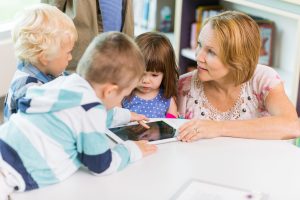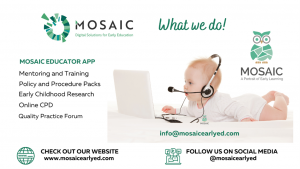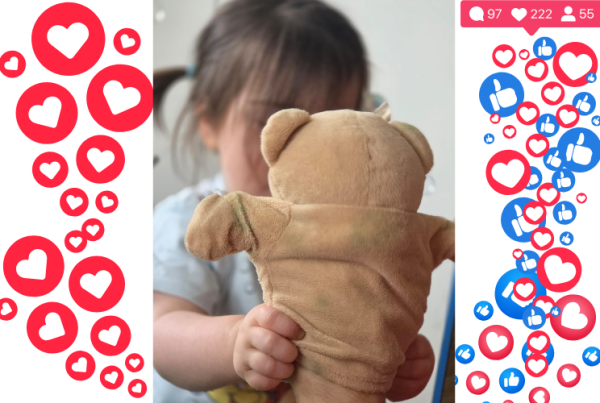As educators, ‘Assessment for Learning’ is one of the most powerful and effective pedagogical strategies that we have at our disposal. When used appropriately, it gives the educator a mechanism to view the child through a meaningful lens and transform how we ‘see’ and support learning and development. This is not a new discovery, rather one that is as central to the essence of early education as children themselves.
Nevertheless, according to the Department of Education Chief Inspectors Report ‘The development of … approaches to assessment, including the use of assessment information to inform the next steps in children’s learning, continue to present a challenge in ELC settings’ (March 2022: p7).
A career-long interest
Assessment ‘for’ Learning in early education is an area of practice that I have always been strongly drawn to. In practice, I vividly remember seeing the difference it can make to children’s learning and more importantly, how they feel about themselves.
I don’t particularly like the term ‘assessment for learning’ and prefer ‘documentation for learning’. During the past 25 years, I have studied and practiced assessment methods, authored publications and articles, developed and delivered training programmes and have been a tireless advocate for the Learning Story method of documentation for learning. More recently, the development of the ‘MOSAIC Educator’ and ‘MOSAIC Family’ EdTech apps represent a continuation of my commitment to this area – bringing early childhood documentation for learning into the technology ecosystem.
However, regardless of the terminology or documentation system used, one thing is clear, documentation for learning should not be considered as an ‘optional extra’. It is not something that we do if we can find the time. It is not a tick box exercise. It is not on the same league as a cleaning procedure or an administration requirement. It represents the very essence of early education and is embedded in meaningful early education practice. Although multiple perspectives are involved, we do not do this for parents, for inspection bodies or as ‘evidence of doing’ – we do this to support children.
Yet, with the passage of time, why does this essential component of pedagogical practice consistently remain unobtainable for some and dismissed as an administration burden for others? Is it time constraints? Is it a gap in core training? Is it a lack of understanding of the importance of meaningful documentation for learning? Or are the fundamentals of early education being lost to the competing factors of funding, differing discourse and overwhelm?
The lifeblood of early education
I use the word ‘meaningful’ a lot. It makes much more sense to me than the word ‘quality’. In the past, ‘quality’ has been dressed up, manipulated and presented in all kinds of superficial tick boxes.
Early education is about striving to find out what children understand, how they think, what they are able to do, what their interests and dispositions are, and how to scaffold their learning to reach the next stage. To do this in a way that is consistent and progressive, a documentation cycle that connects observation, planning and assessment in a continuous cycle needs to be in place.
When practice responses are meaningful to the child- to their interests, lived experience, ability, and age – then ‘quality’ emerges in many different forms.

What makes documentation meaningful?
Meaningful documentation can be described as a mosaic or tapestry of different pieces – all brought together to create a vibrant picture of the child’s learning journey. This picture is created through systematic and continuous observation, documentation and reflection involving multiple perspectives including the voice of the child, the educator and parents.
Meaningful assessment is progressive and builds over time- it tells a story of learning. It is always individual to the child and highlights their interests, strengths and dispositions. It does not pass judgement but instead focuses on what the child can do with adult support – taking them to the next stage in development and learning. Meaningful documentation captures the process of learning, the place and time and who was involved.

It is important to remember that documentation is a pedagogical tool in itself. For example, educators using the MOSAIC Educator app use technology to engage children with their unique e-storybook in areas such as self-reflection, self-assessment and discussion. This practice not only grows children’s awareness of the meaningful use of technology, but it also builds self-esteem through celebrating and reflecting on achievements. This is further reinforced at home when parents receive learning stories, pictures and videos through their MOSAIC Family app in real time.
Are observation notes and pictures enough?
Observations by themselves are just that – an observation. Useful as a snapshot in time. But it is only when an observation is developed into a learning story that it becomes a pedagogical tool to support learning. Efficiently constructed learning stories succinctly describe an observed learning episode, a summary of learning and a forward plan to support and enhance future learning. This learning story framework can never be compared to a collection of photos stuck into a scrapbook and surrounded by examples of art and craft. This is fine if your aim is to provide a memento scrapbook for parents at the end of the year, or a floorbook for children to use for reflection and discussion – but this should not be confused with systematic documentation to support children’s learning and development.
The lack of time is undeniably an issue that cannot be ignored. However, from my own experience of providing continuing professional development on documentation techniques, it is about putting a workable system in place and using time efficiently.
It is also about educators seeing documentation processes as central to their role, embedded within the curriculum and not something that sits outside the curriculum as an administration chore. This would be akin to working in a busy shop and believing that you don’t have time to restock shelves – the two functions are interdependent.
Like pressures attributed to a multiplicity of career choices, it is also worth remembering that a sound commitment to the function and role of the professional educator is paramount when responsible for young children.
3 steps forward to reclaim documentation practice
A good starting point is to review your curriculum statement which includes your long-term curriculum goals and base curriculum as well as your approach to documentation for learning. Set out what is achievable for your service and describe how you will go about this. Ensure all staff are aware of and meet agreed values and targets.
Decide on a system for documentation – this can either be an app like MOSAIC which includes all documentation for learning tools (www.mosaiceearlyed.com) or a paper system that encompasses observation, planning, assessment and reflection. Ensure all staff use the same system, differentiated for age groups if necessary.
Staff who have availed of different training at different times may have conflicting approaches to documentation. To ensure consistency of approach, engage staff in continuing professional development in areas such as Emergent Curriculum, Reflective Practice, the Learning Story Approach and Curriculum Planning.
Finally, step forward to reclaim this fundamental cornerstone of early education to ensure that early learning experiences provide the best possible outcomes for all children. Despite the constraints on the role now or in the future, this is the job undertaken. As such, consider documentation for learning is a ‘necessary essential’ rather than an ‘optional extra’.
-Ends-
About the Author:
Avril McMonagle is Founder and CEO of MOSAIC Digital Solutions for Early Education which provides a range of child centred digital products, training and quality compliance supports for early childhood services and stakeholders. The company flagship products are the MOSAIC Educator and MOSAIC Family Apps which offer multi-modal documentation and assessment tools for professional educators. For more or to book a demo see www.mosaicearlyed.com; email [email protected] and follow us on social media @mosaicearlyed





